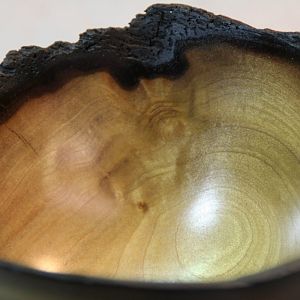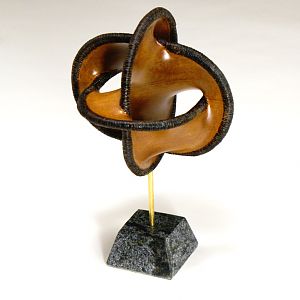This is another of my vessels inspired by ancient pottery. Rhodes was one of the first islands in the Aegean to cultivate the wine grape. By the 4th century B.C. amphorae from Rhodes had become standardized clay vessels, with a creamy surface, pointed tip, simple rim and acute-angled handles. These became the standard container for shipping wine throughout the eastern Mediterranean.
Rhodian Amphorae were also all marked with a pair of stamps which was an endorsement by a licensed manufacturer and the other the name of an annually appointed official. That provided proof that the amphora came from a Rhodian workshop and its contents from a Rhodian vineyard. Many centuries later the French adopted the practice, which became known as "Appellation Controlle" and has been adopted internationally as a way to verify both the point of origin and quality of products ever since.
319 pieces of hard maple, with a walnut stand. Finish on the vessel is Watco natural. Walnut stand is sealed with shellac with a couple coats of satin wipe on poly. Some "firsts" for me on this one, which turned out to be a fun challenge. Most all of my segmented vessels include a feature ring, or different woods for the base or rim. For this one I decided to go plain, and not use any decoration at all. In other words, let the color and shape of the vessel speak for itself.
The handles were made using Jerry Bennett's armature technique, although no curves were involved. I used a pen mandrel to turn short tube sections, then used a 1/4" wood dowel as my armature. The stand ring is segmented, but includes four thin rings, brick laid together for strength. The legs are bent lamination, glued up from four thin layers as well. Sizing the inside diameter of the stand, so the vessel sat at the proper height was a challenge, and took some trial and error.
Critiques and comments welcomed.








